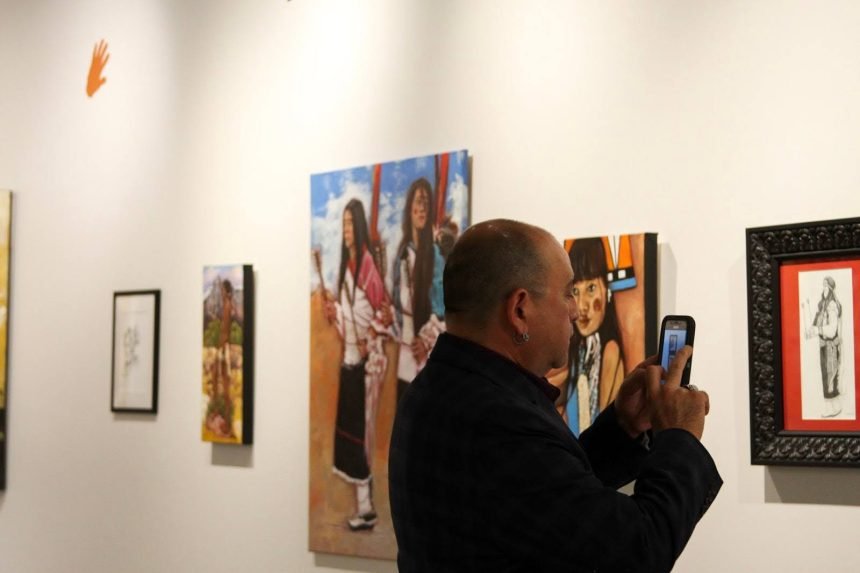Last week the University of Denver’s School of Art and Art History held an exhibit featuring the work of Tonio LeFebre. The Colorado native artist of Piro/Tiwa and Spanish descent demonstrated the power of storytelling alongside the importance of preserving one’s heritage.
Thanks to Annie Drysdale, curator of the exhibit, LeFebre’s pieces were curated in a way that embodied the communal experience of viewing tradition through art. LeFebre’s standout work titled “Wa Sou e” or “Life is Good” was displayed in the Davis Gallery, giving students and faculty a glimpse into his culturally abundant upbringing.

Pueblo Indian culture art is more than a decorative piece, rather it is a heartbeat of heritage forever documented within the walls of earth. The earliest recorded stories are encased in the walls of ancient rock caves in murals and paintings.
Pueblo Indian culture emphasizes the importance of murals and cave paintings that have allowed humanity to learn about the first traditions, experiences and legends of our time. Communal spiritual experiences were often documented within the walls of caves to allow others to remember a significant moment in time and continue to honor one’s heritage.
Spiritual ceremonies are not done without a strong community and observers of the event. The spherical nature of a cave allowed for these paintings to be viewed in an immersive way mimicking the nature of a ceremony.
“I met Tonio through a collaborative project…[SOAR] for the Pueblo Historic District’s section on the Pueblo Levee Mural Project…I reached out to the artist to inquire about coordinating a solo exhibition that would highlight LeFebre’s incredible visual and oral storytelling skills. We were excited to present Spectators to the University of Denver community,” Drysdale said.


Entering the gallery, you walk the same steps of those before you. LeFebre painted shoe prints on the ground that allow the viewer to see the evolution of one’s own ancestors. These prints lead you to the three center pieces painted in vibrant colors. Viewers can hear the beating of a drum and native song, a recording of LeFebre’s grandfather singing and drumming. It plays aloud, serving as a reminder of one’s own ancestry.
LeFebre incorporates countless other elements that spark intrigue such as a violin, native clothing, cultural symbols painted on the walls and sketches of tribe members. As you exit, the art on the walls begins to dim and duller sketches are present, displaying more present times.
Drysdale expressed her pride regarding their ability to display the progression of time using central objects and a cave-like curation, shifting one’s interpretation of linear time.
“From the soft crackling sound of LeFebre’s grandfather singing traditional Piro songs from above, the inclusion of the revived Piro language on the walls, the petroglyph iconography that drew the eye upward, to the footprints on the ground below, we wanted the spectator to feel centered as the main character in the narrative,” Drysdale said. “Adding layers of textiles and musical instruments to the paintings added to the dimensionality of the space and presented a more dynamic and multifaceted view of the artist’s cultural heritage.”


LeFebre’s paintings are known for celebrating Native American culture as well as bringing awareness to the teachings of his elders and what he has learned from his community. He emphasizes the order in which the spectator would view the work, similar to the work of early humans commemorated on the walls of caves.
His nuanced idea of bringing community members into cultural events and ceremonies signified the role of the community in the preservation of heritage. LeFebre believes that if there is no one to “spectate” such events, then the meaning of these ceremonies is lost.
LeFebre’s curation shows the viewer how all memories and traditions are meaningful and deserve to be heard, even if you are not familiar with others beyond your own.










